Back in 2021, Scott Edelstein detailed Digital Domain‘s contributions to Free Guy. He later brought his expertise to Spider-Man: No Way Home and Madame Web.
In 2022, Ellen Hoffmann shared insights into Digital Domain’s animation work on Black Panther: Wakanda Forever. She later contributed to Madame Web and now returns to discuss her work on Venom: The Last Dance.
What was your feeling to enter into the Venom universe?
Scott Edelstein (SE): Having worked on several films with comic origins, I was excited to help visualize Knull and bring the world of Klyntar to life. It was a highly stylized universe with its own set of challenges, and I’m proud of our artistic and technically skilled team for seamlessly bringing it all together.
How was the collaboration with Director Kelly Marcel and with VFX Supervisors John Moffatt and Aharon Bourland?
SE: Don’t tell anyone I said this, but working with Kelly, John and Aharon was one of my favorite creative collaborations so far. From the outset, Kelly provided a clear, overarching vision for the film, helping us understand the emotional and narrative weight behind every shot. She pushed us creatively while allowing us to innovate and experiment within the boundaries of the narrative.
Working closely with John, Aharon and their producer, Greg Baxter, was equally amazing. Their expertise and technical insight helped us navigate the challenges of designing such complex effects. Their feedback was both constructive and collaborative, and the trust they had in our ability to complete the project allowed us the freedom to explore and create within a very tight timeline while absorbing new creative ideas along the way.
Communication was a key component of this collaboration. Regular check-ins and review sessions allowed the teams to refine the work in real time. This constant feedback loop ensured that we were always moving forward with a unified vision, whether it was adjusting the look of Klyntar or fine-tuning the animation for the Codex sequence. The combined efforts of Kelly, John, Aharon, Greg and the entire team helped us meet the ambitious deadlines without sacrificing the quality or emotional impact of the VFX.
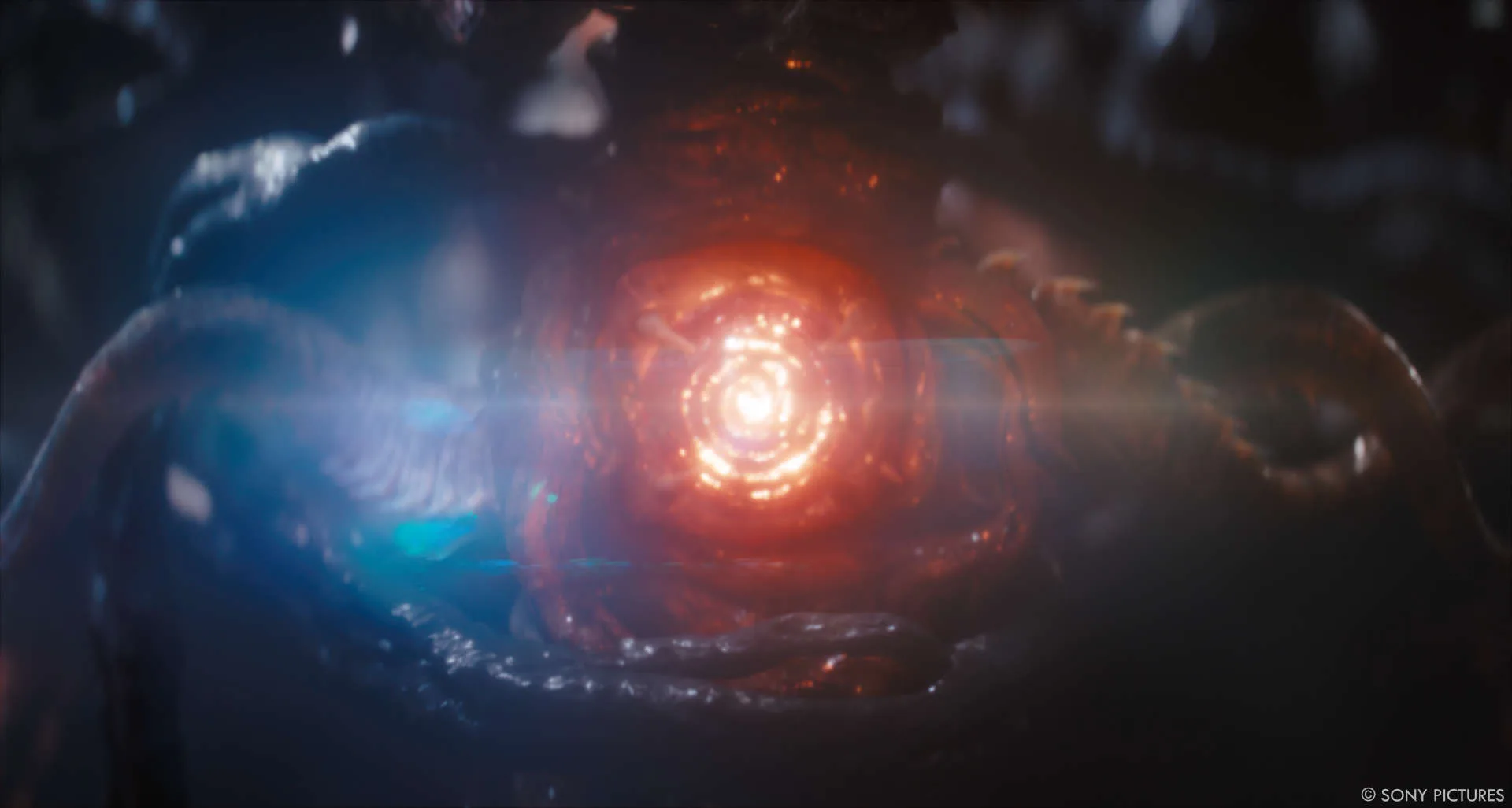
How did you organize the work with your VFX Producer?
SE: Our Digital Domain VFX Producer, Gayle Munro (no longer at Digital Domain), was key to organizing and streamlining the workflow for this project. Gayle played a central role in ensuring that we adhered to the tight timeline while maintaining the high standards required for the show. From breaking down the project into clear milestones and deadlines to helping the team stay on track, she ensured we could deliver each phase of the VFX work in a timely manner.
Jen Avery, our VFX Coordinator, was equally vital in keeping things running smoothly. Jen handled the day-to-day logistics, ensuring that all assets, notes, and feedback were organized and communicated clearly across departments. Her attention to detail and organizational skills made it easier for us to track progress, manage files, and stay aligned throughout the production pipeline. The combination of Gayle’s overarching project management and Jen’s meticulous coordination allowed us to navigate the intense workload efficiently, ensuring that the team could focus on delivering the best possible results within the given timeframe.
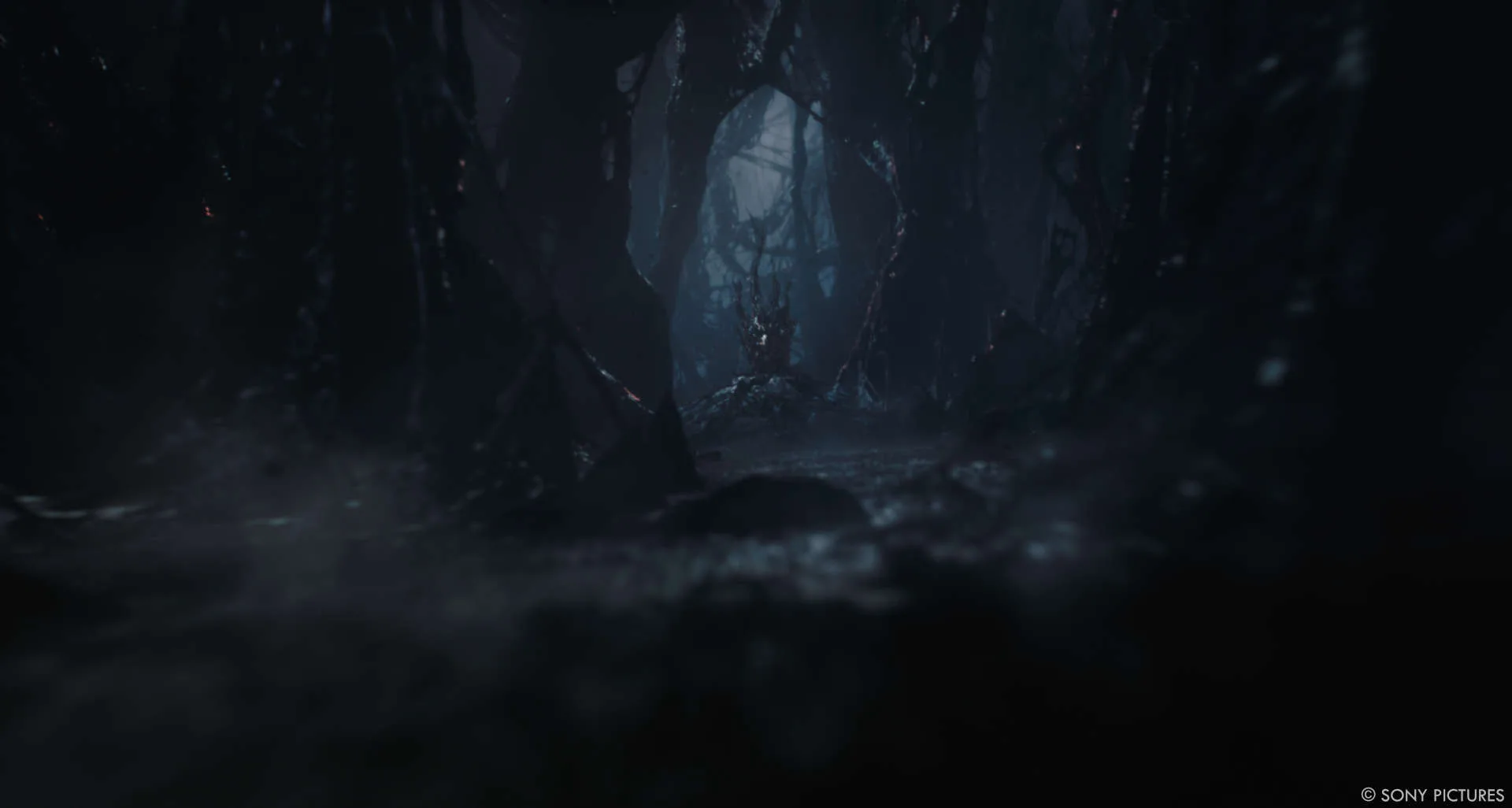
What are the sequences made by Digital Domain?
SE: Digital Domain worked on several key sequences involving Knull and the world of Klyntar. Our focus was primarily on any scenes that took place on Klyntar or featured Knull, including the creation of the Codex. Our work bookended the film, providing both the opening and closing scenes. These sequences were integral to setting the tone and bringing the world of Knull and Klyntar to life.
What were the main inspirations for designing Knull, especially in terms of his menacing and otherworldly appearance?
SE: When designing Knull, our approach was deeply rooted in both refining existing assets and creating a character capable of delivering dialogue full-frame, directly to the camera. We began with an ingested asset from another vendor but had to make significant adjustments to ensure Knull had the menacing, otherworldly presence needed for the role. This meant revisiting the basics and redesigning the underlying facial bones and muscles to allow for more expressive movement, mainly when delivering lines of dialogue.
Aharon, the client supervisor, provided us with valuable references for the skin beneath Knull’s armor, which helped inform the raw, almost burned quality of his flesh. While it was sometimes quite disturbing to look at, this detail added a unique texture that made his character feel more brutal and menacing. We also drew inspiration from the comics, looking for ways to translate Knull’s terrifying presence into something that felt grounded in photorealism. Combining these elements, we were able to create a design that was both true to the source material and adapted to the film’s visual language, giving Knull a terrifying and otherworldly appearance that could engage the audience up close.
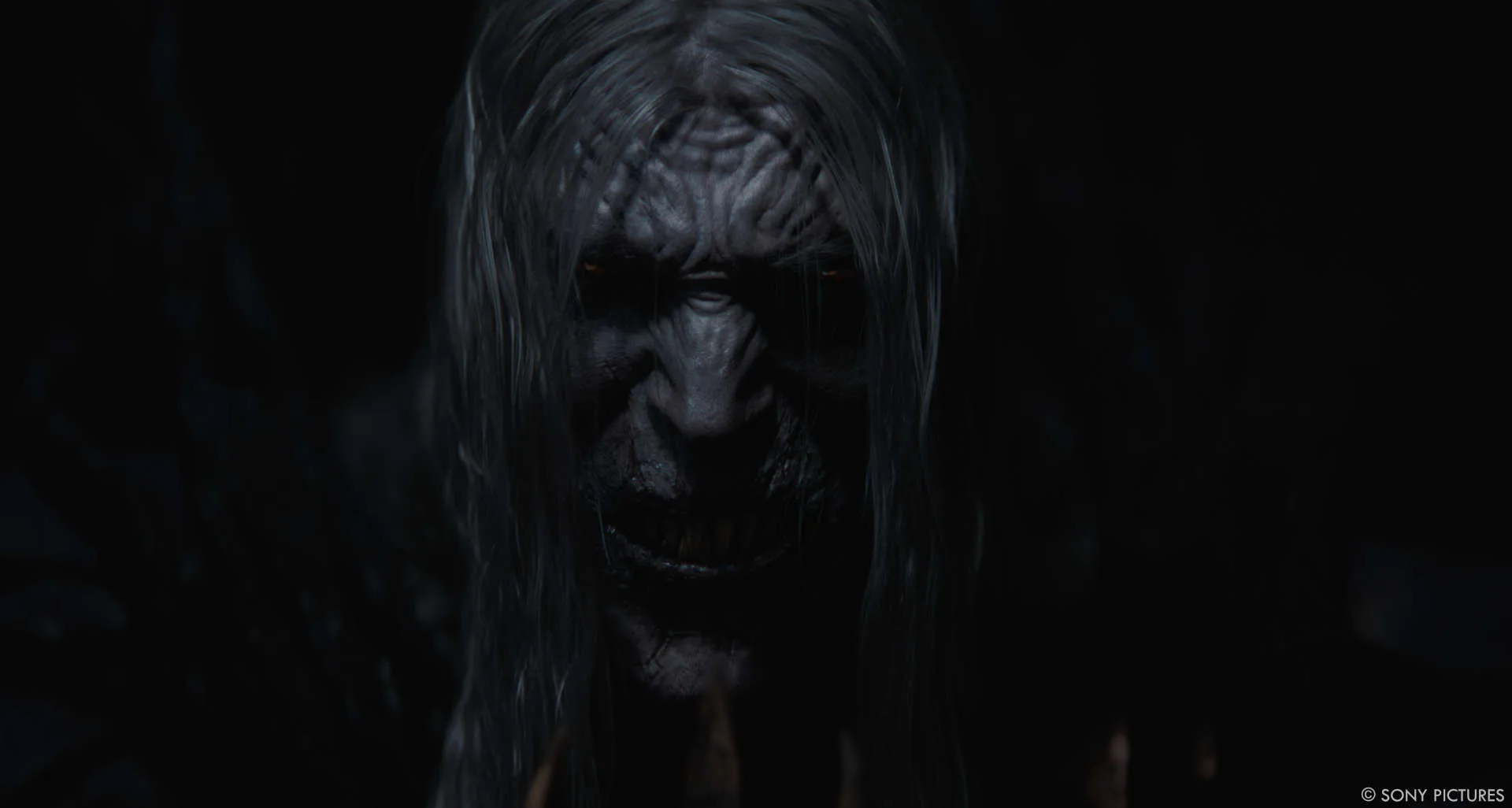
Knull’s symbiotic armor and weaponry are iconic. How did you approach the visual and technical challenges of creating their organic yet intimidating look?
SE: Knull’s symbiotic armor and weaponry started as an ingested asset from another vendor, but much like his body, it required significant refinement to achieve the organic yet intimidating look we wanted. We approached the armor and weapons as extensions of Knull’s being, focusing on making them feel like they were grown from his own flesh rather than something simply added on. This meant reworking the structure, ensuring that the armor had a fluid, living quality while still looking sharp and aggressive.
To bring this vision to life, we began by revisiting the design and anatomy, much like we did with Knull’s facial features. We adjusted the underlying structure of the armor, reworking the underlying elements, and jagged edges to ensure they could support the look needed for action sequences, especially when interacting with Knull’s body. We also added details that gave the armor an almost decayed look — like exposed bone — to enhance its menacing presence.
The necrosword followed the same principles, although we started from art department designs. Through an iterative process, we were able to give his sword a sense of something both alive and terrifying while still making it functional and menacing within the context of the story.
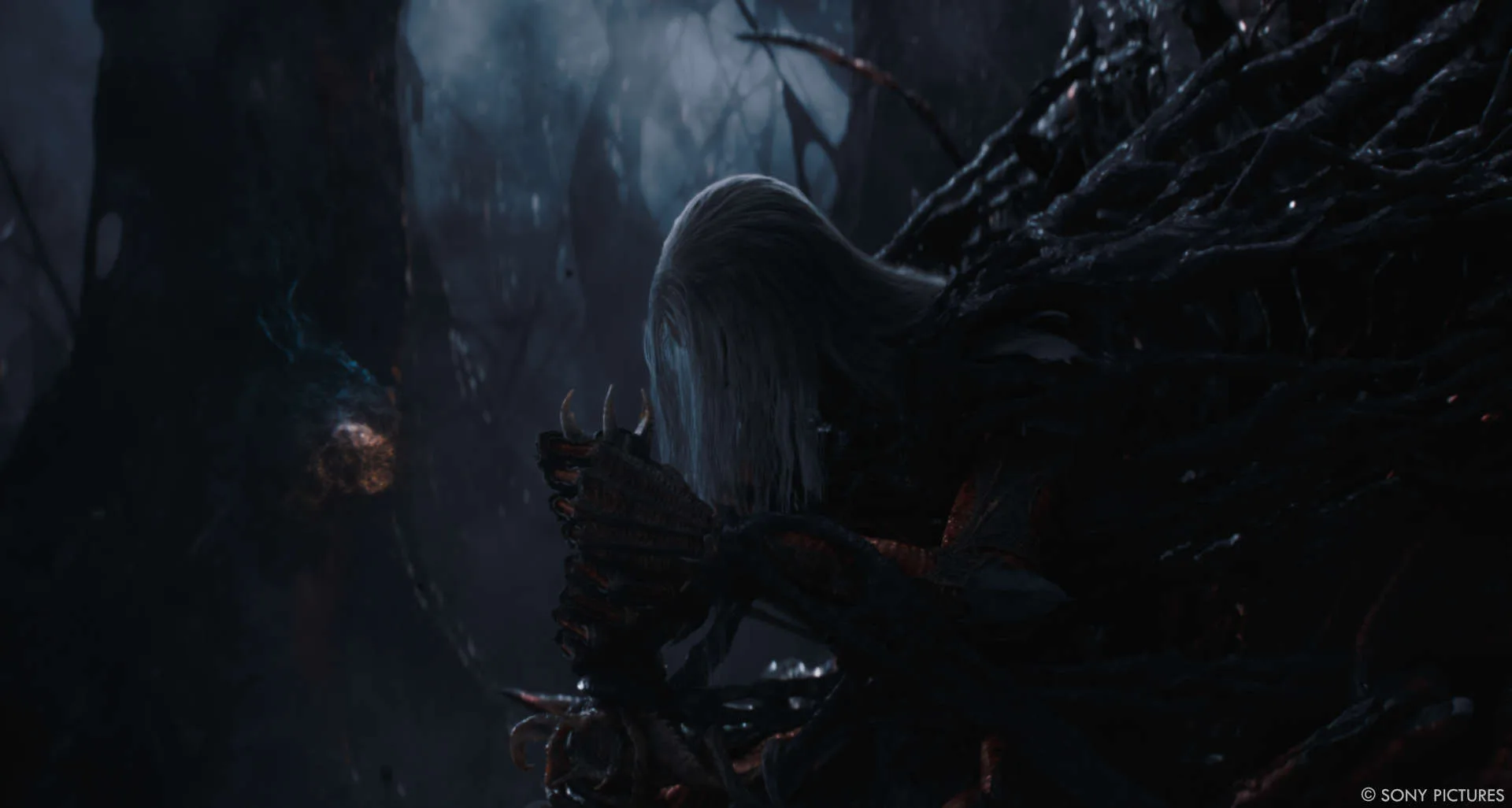
Knull’s presence exudes power and dread. How did the team use lighting, textures, and VFX elements to enhance his god-like aura on screen?
SE: To highlight Knull’s presence in a dark, oppressive world with no specific light source, we focused on subtle lighting techniques. Since the environment was a prison he’d been trapped in for thousands of years, we used ambient lighting to gently reveal his form, casting faint glows that drew attention to him without fully illuminating his surroundings. This allowed Knull to stand out from the shadows while maintaining the atmosphere of isolation and confinement.
Given that we needed to hide his face for much of the time to maintain the mystery of his identity, we focused on lighting and shadow to partially obscure his features. This added to his aura of menace, keeping him in the shadows while still making sure his imposing form and tortured history were felt throughout the scene.
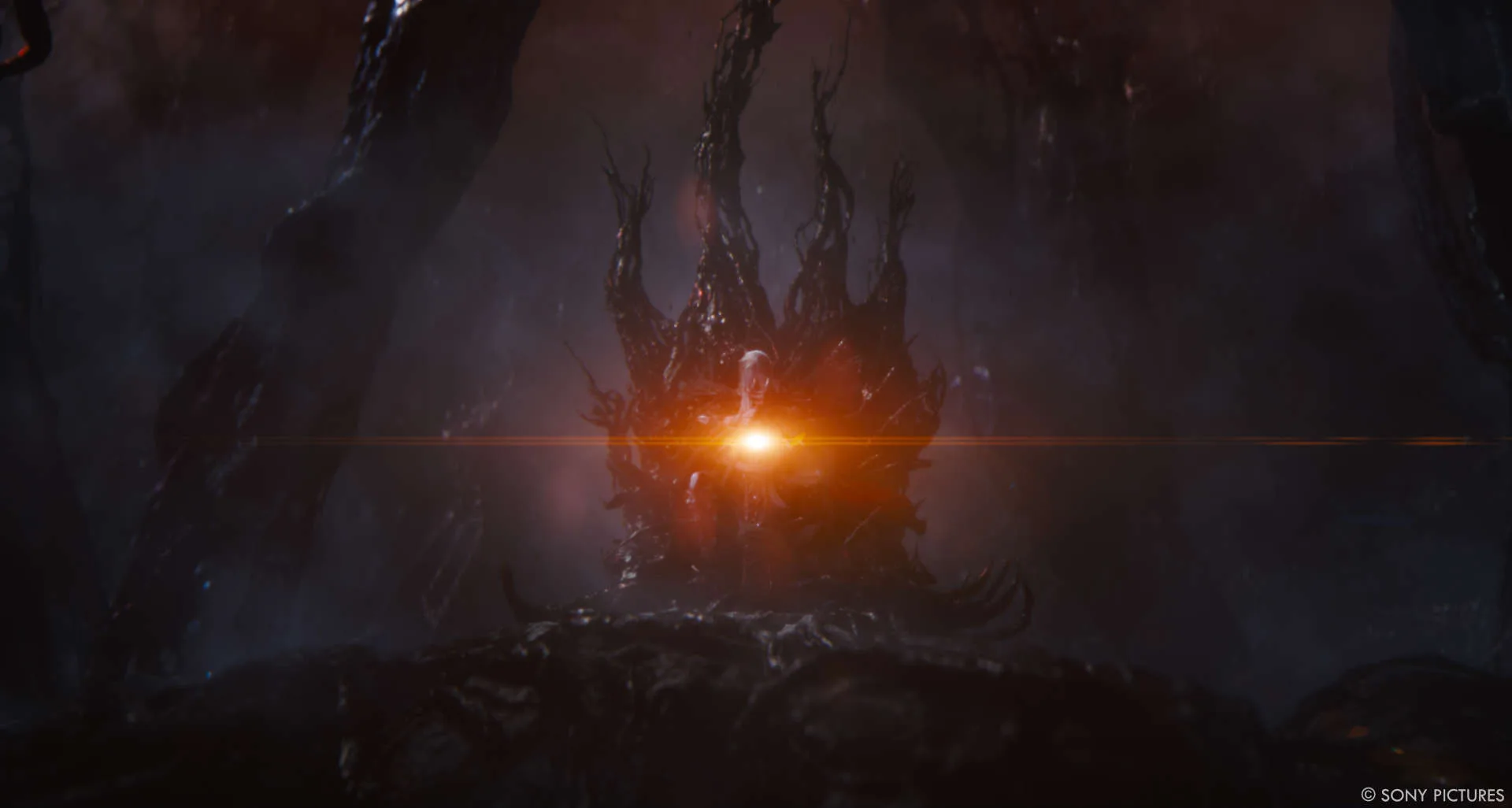
Were there any specific challenges or breakthroughs in bringing Knull’s design from concept art to final on-screen realization?
SE: One of the biggest challenges in bringing Knull’s design to a final on-screen realization was making him a photoreal, believable character, especially in hero moments when he was delivering dialogue directly to the camera. The complexity of his design and importance to the story made it essential to ensure that his facial expressions and movements were both natural and menacing, even with all the alien elements.
To achieve this, we leveraged Digital Domain’s latest tools, including our cutting-edge markerless facial capture technology, Masquerade3. This technology allowed us to capture incredibly detailed, subtle facial expressions, which were critical for conveying emotion and intensity in Knull’s dialogue scenes. The challenge was not just getting the facial performance right, but also ensuring that it worked seamlessly with his monstrous features and the otherworldly quality of his design.
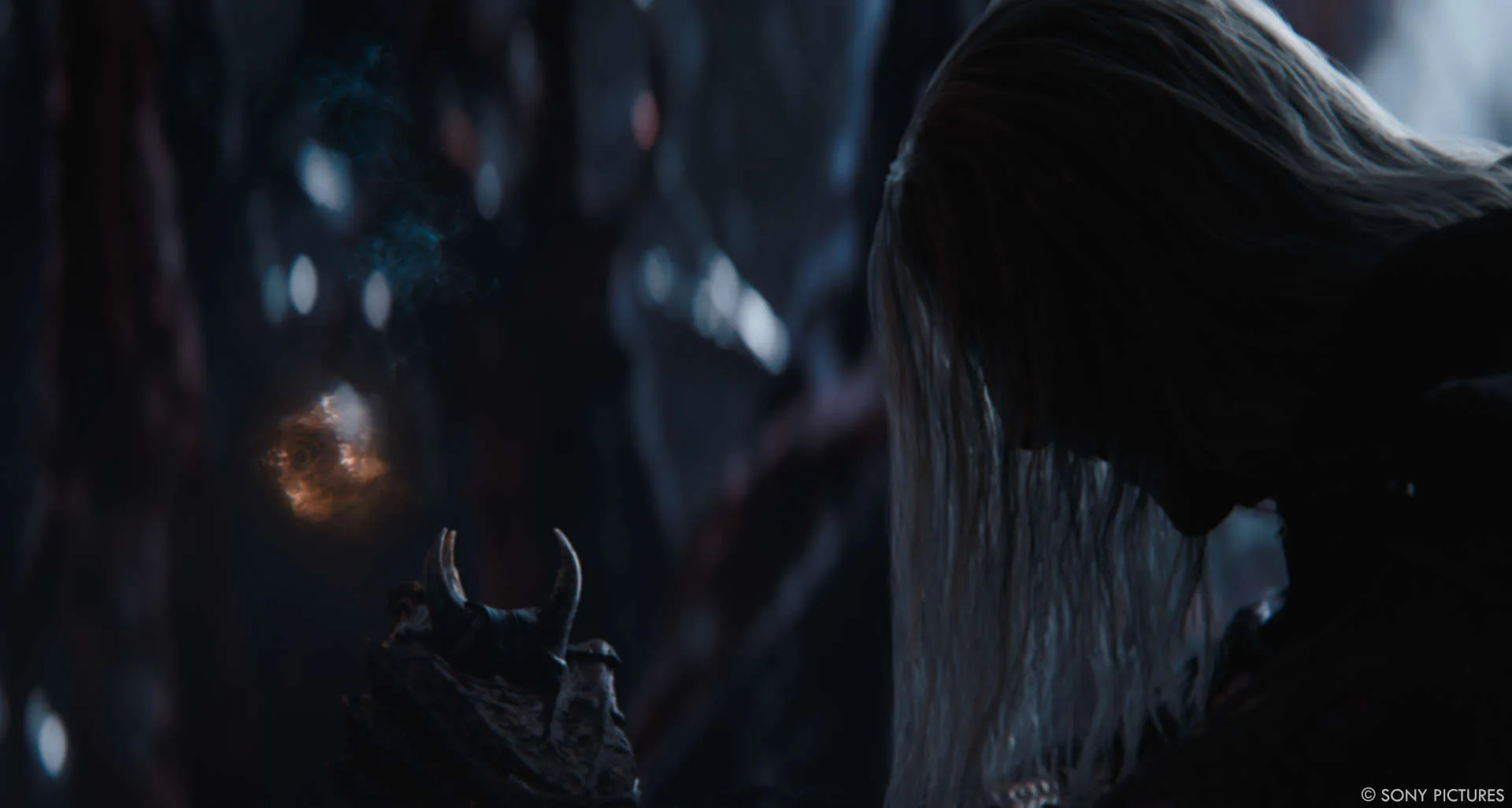
Klyntar has a unique visual identity as the birthplace of the symbiotes. What inspired the team’s approach to designing its alien landscapes and architecture?
SE: The design of Klyntar’s alien landscapes and architecture was inspired by a range of sources, including designs from past films, comic book panels, and direction from our client, all anchored in a base from previs. The idea behind Klyntar was that it was a place created by the symbiotes themselves, formed from their own bodies as a prison for Knull. This unique concept shaped our approach to the environment, as we wanted to convey both the sense of an ancient, dark power and the organic, unsettling nature of the symbiotes.
Drawing inspiration from comic book references allowed us to capture an alien, almost grotesque quality, while designs from other films helped us explore different ways to visually represent the symbiotes’ sacrifice and the harshness of the prison they built. The client’s guidance was key in ensuring that the environment felt both imposing and integral to the story, while the previs gave us a solid foundation to understand the layout and pacing of the environment. Together, these elements helped us craft Klyntar into a place that felt like a living, monstrous structure, created from the very beings it imprisoned.
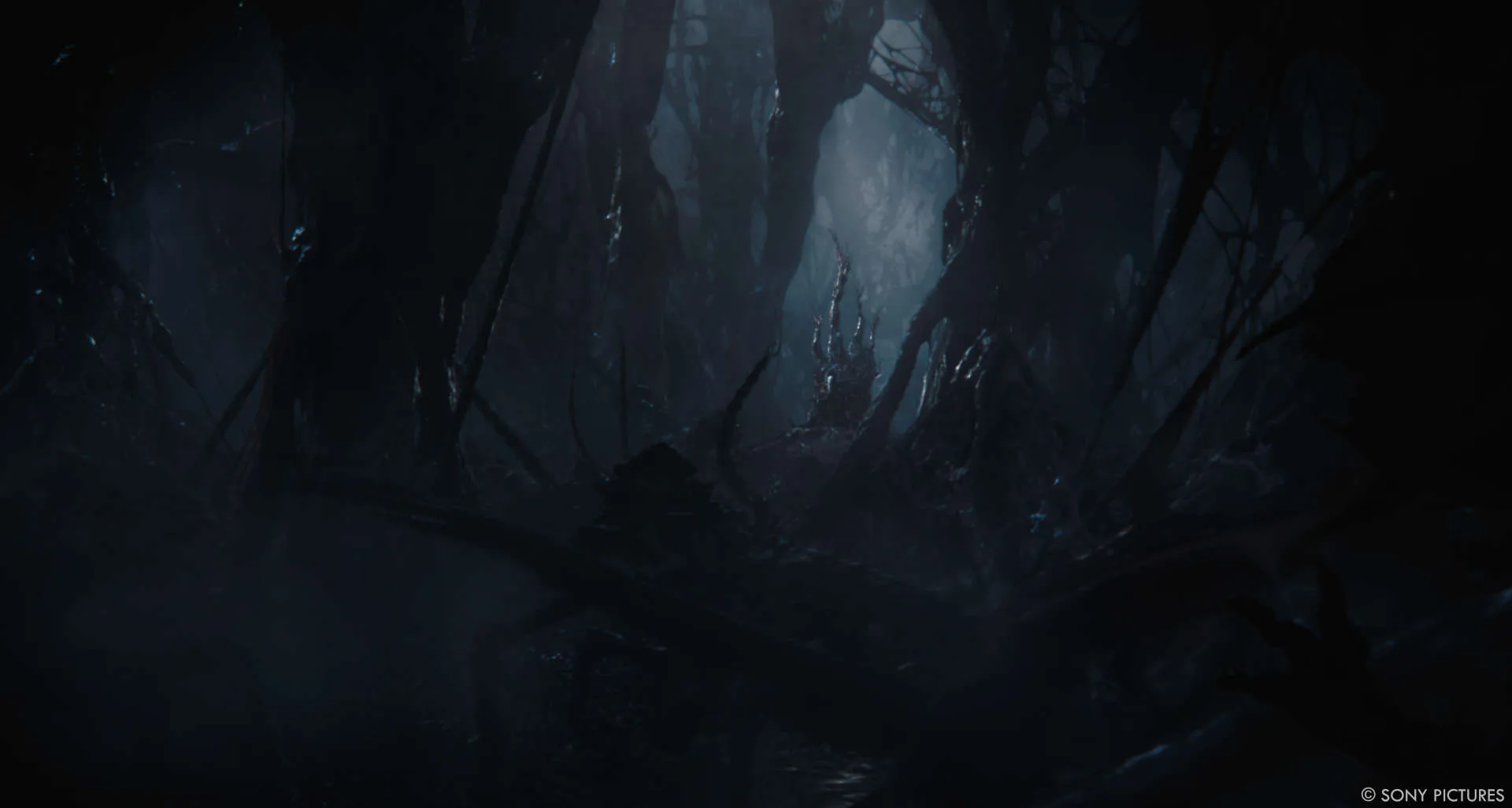
In creating Klyntar, how did you ensure its environment felt both vast and alive, as though it were an extension of the symbiote hive-mind?
SE: To make Klyntar feel both vast and alive, we focused on creating an environment that constantly shifted and changed, reflecting the chaotic, organic nature of the symbiotes. We used Houdini to create fluid simulations and dynamic textures that allowed the landscape to feel in constant motion, with surfaces that appeared to breathe and transform. This gave the environment a sense of life as if it were always evolving.
Lighting also played a key role in enhancing the feeling of vastness. We worked with subtle atmospheric effects and varying light sources to create depth and mystery, ensuring that parts of Klyntar seemed to dissolve into shadow, while other areas were revealed with eerie, glowing highlights. The interplay of light and texture gave the environment both scale and a sense of responsiveness, making it feel as though the world itself was a living, shifting entity, ever-changing in response to its surroundings.
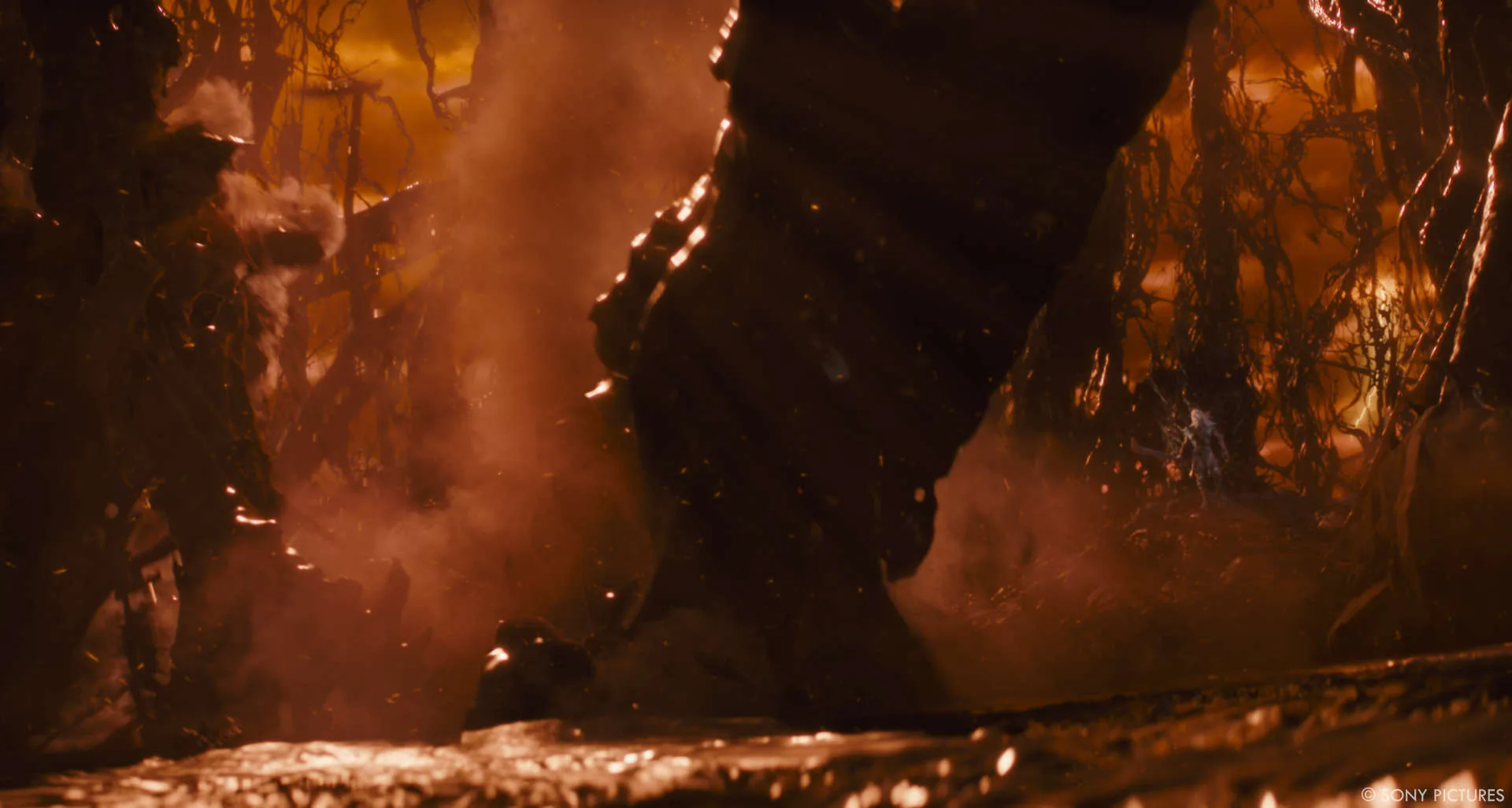
The Xenophages are terrifying and monstrous. Can you walk us through the process of designing their grotesque yet functional anatomy?
SE: For the Xenophages, the assets were provided to us by another vendor, and our role was to refine and enhance them to fit the specific needs of our shots. Given that we had extremely close-up shots, we focused on upres’ing the existing assets to ensure they held up at a higher level of detail. We added extra details like drool and nasal spray, which contributed to their grotesque and monstrous appearance, enhancing their unsettling nature. We also worked on refining the eyes, adding more intricate details to make them feel more alive and intense but also blind in the close-up shots. Our aim was to maintain their terrifying, monstrous look while making sure the anatomy felt functional and believable within the world they inhabit. The additional details helped push their grotesque appearance while still keeping them grounded in the film’s overall aesthetic.
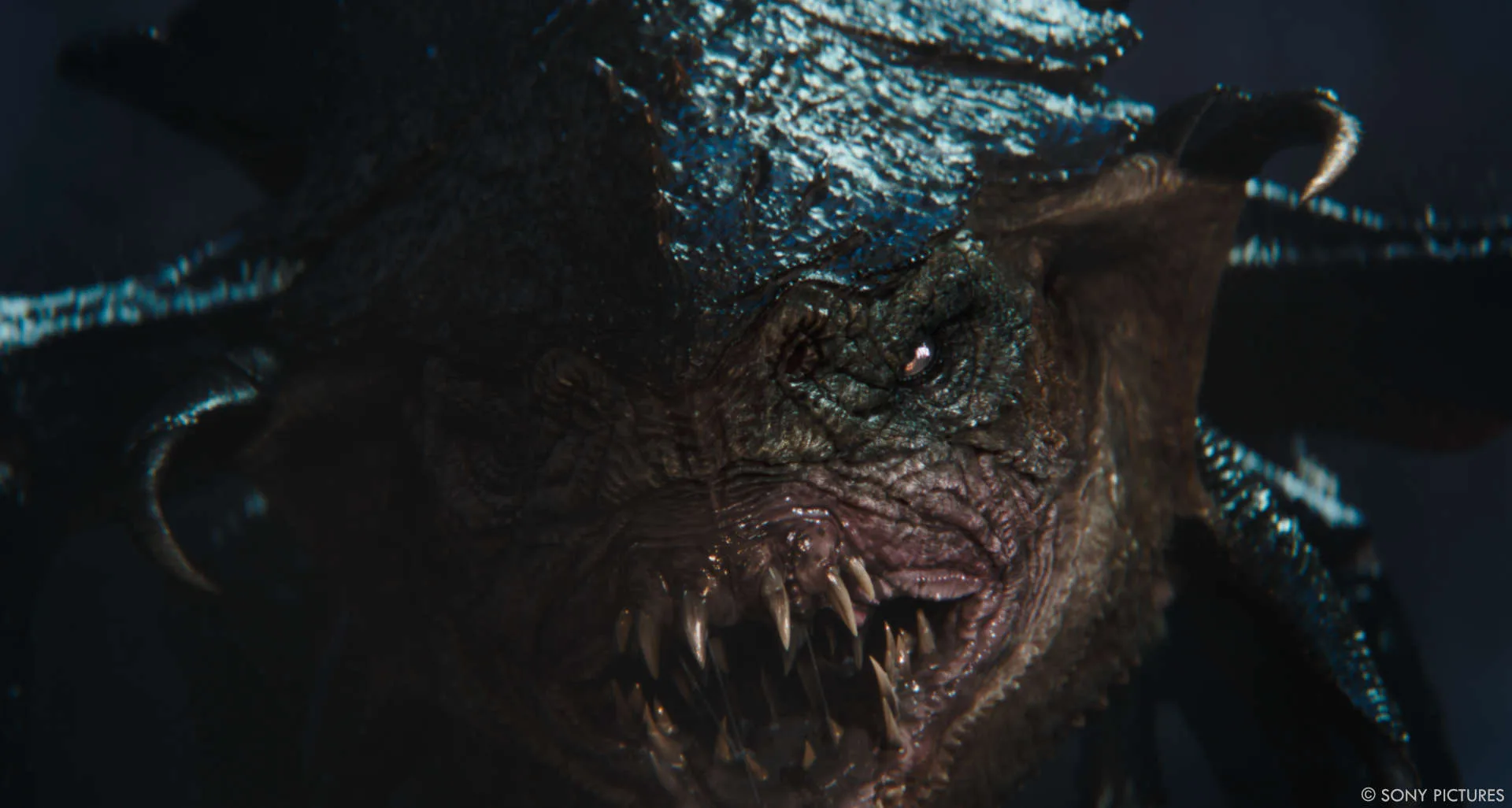
How did you approach the animation of the Xenophages to convey their predatory and chaotic nature?
Ellen Hoffmann (EH): The Xenophanges share a common goal, but there’s always a struggle for dominance within the pack. Constant competition over who leads fuels their interactions. In our research, we discovered some fascinating behaviors in fighting hyenas that provided valuable insights. The challenge was to capture their chaotic, fast-paced movements while maintaining that sense of underlying tension. We were fortunate to receive strong reference material from other vendors who had already worked on the character for some time. Given our tight timeline, these references were crucial for achieving a strong result quickly.
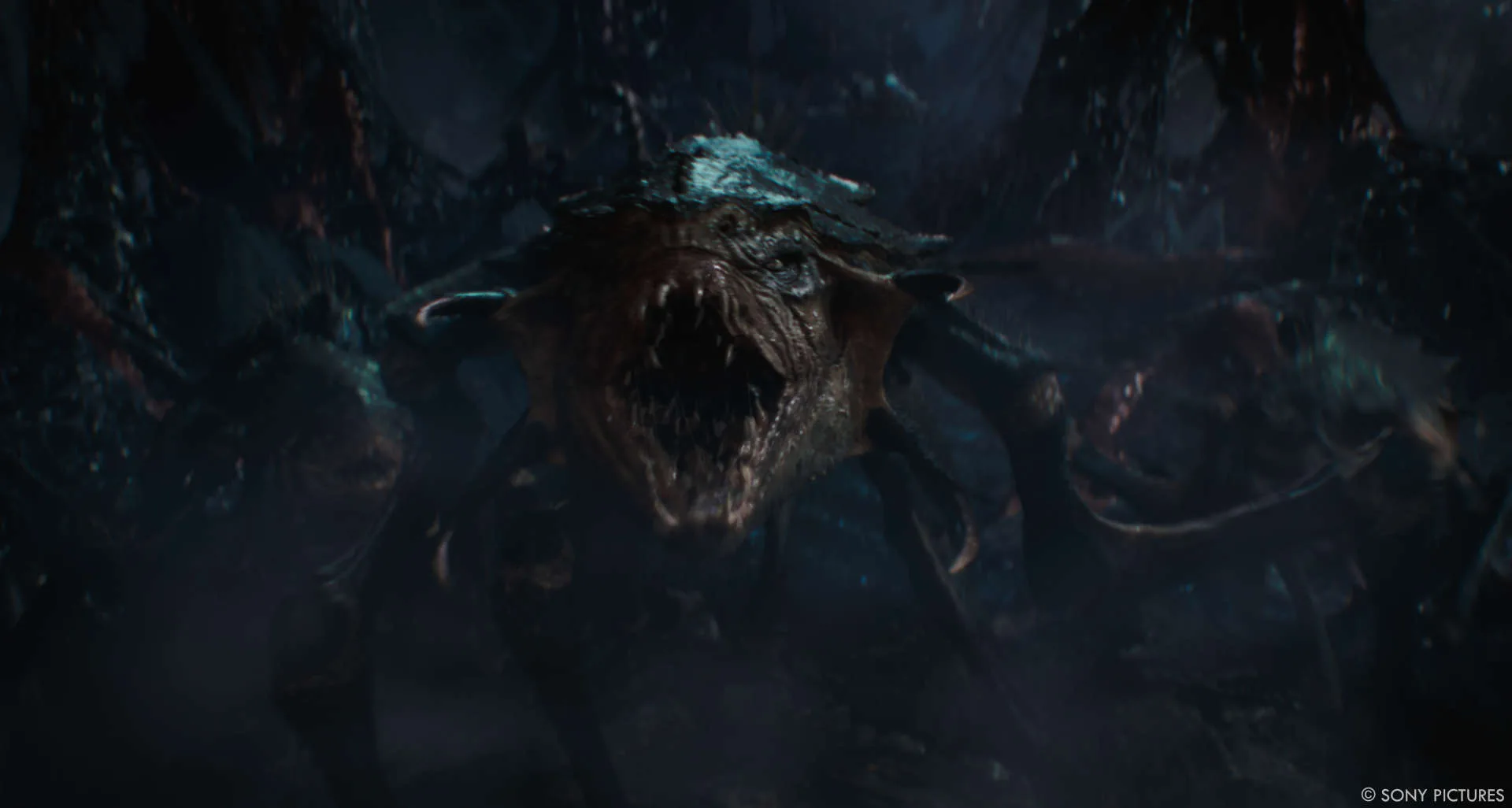
Their movements are both alien and insect-like. What references or techniques did you use to strike the right balance between realism and fantasy?
EH: For realism, the key was always to convey the heaviness of the character. Even though they move quickly, we needed to ensure they still felt like towering, massive creatures. We incorporated small, rapid head movements and quick shifts in direction, like brief head shakes, but always kept the body movements slower and heavier. The result was that, even in moments of fast movement, their overall motion retained a grounded, weighty feel, as if they were pushing forward with force, but only for a brief moment.
Were there specific sequences involving the Xenophages that pushed the limits of what Digital Domain could achieve in terms of VFX and animation?
EH: We had a scene with a large number of Xenosphages in a single shot, which could have been challenging to manage. However, thanks to good planning and the use of in-house crowd animation tools, we were able to make a scene with 40 creatures still manageable. Finding the right composition in frame and still being able to add detailed animation. I have to say, everything went surprisingly smooth.
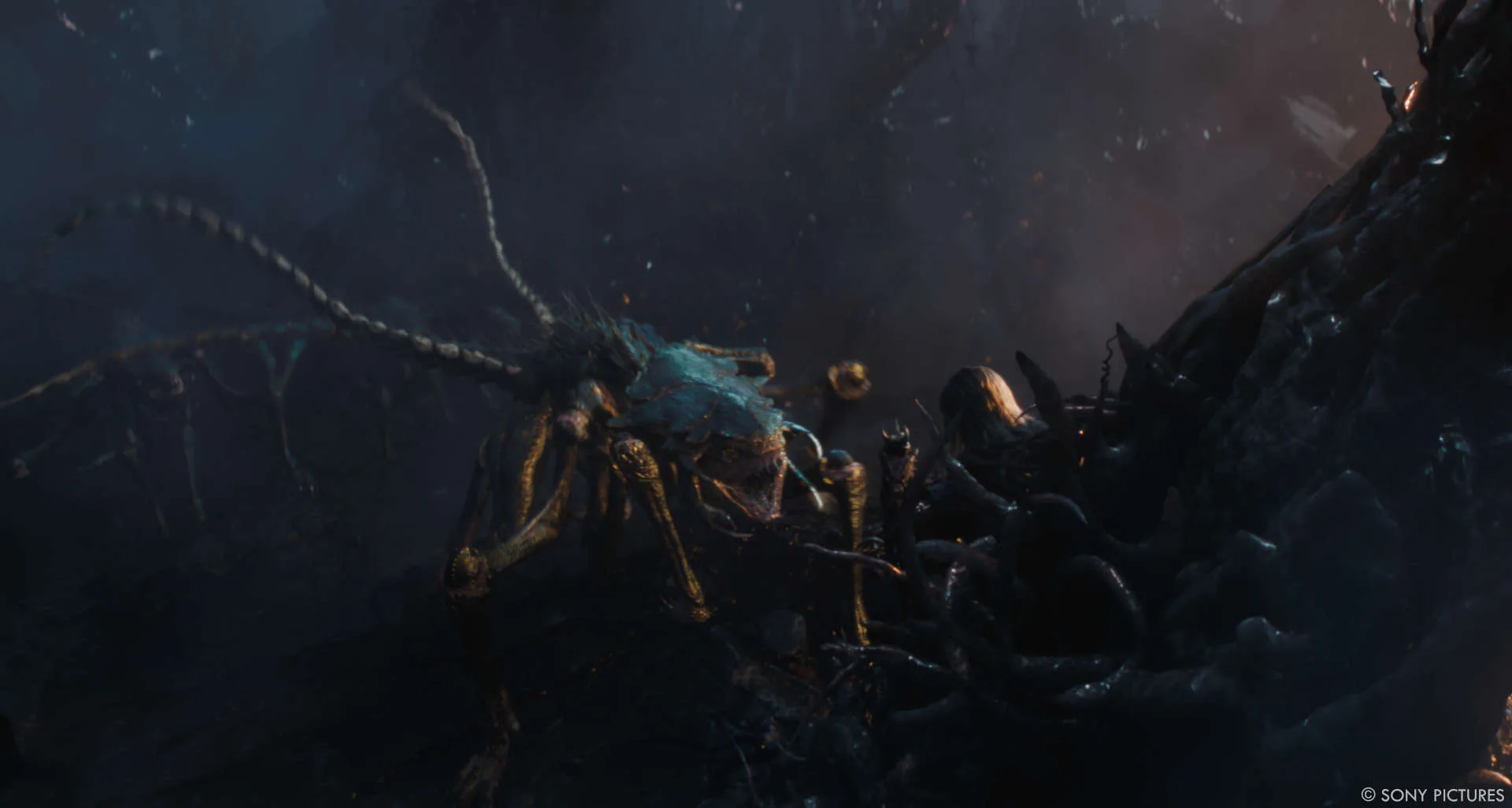
Were there any unexpected technical or creative challenges encountered during the production?
SE: As with any film production, there were a few unexpected challenges and creative changes along the way. One of the main hurdles came late in delivery when some of Knull’s dialogue changed and was not captured with Tom Hardy during our Masquerade3 facial capture setup. To overcome this, we had to pivot quickly and rely on witness camera footage as a reference. From there, our highly skilled animators played a crucial role in bringing the dialogue to life, carefully animating Knull’s facial expressions and movements to match the emotional intensity required for the scene.
EH: After using motion capture for the other shots, we gained valuable insights into Tom Hardy’s distinctive performance, which we then applied to our fully animated facial shots. However, with the shift in dialogue intensity compared to the mocap, we were able to amplify the performance, incorporating stronger and more expressive body and facial movements.
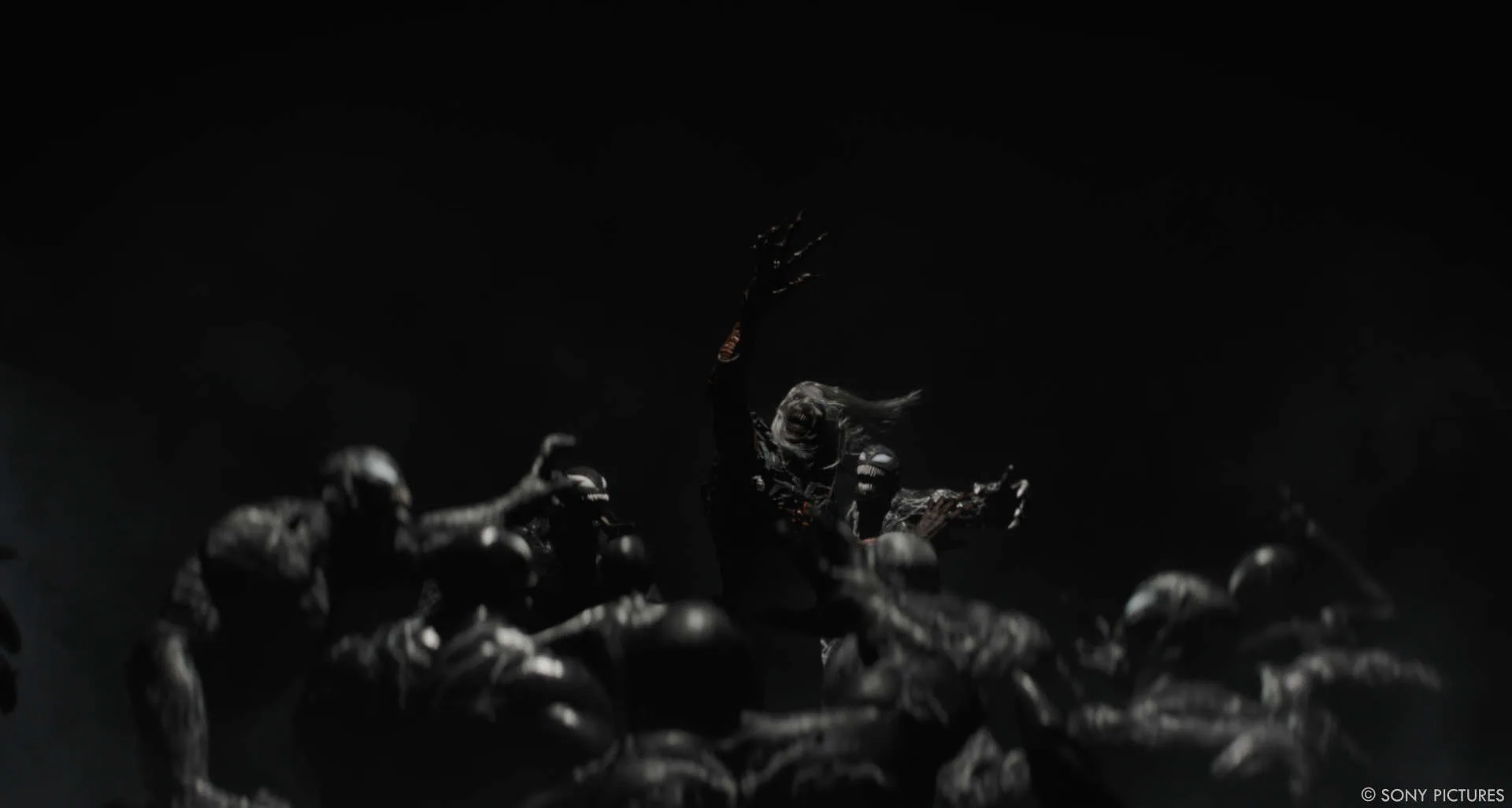
Looking back on the project, what aspects of the visual effects are you most proud of?
SE: One of the most challenging yet rewarding sequences we worked on was a single, long shot that illustrated the creation of the Codex. This sequence was an all-CG shot set at a microscopic level, depicting the fusion of human and symbiote energy and culminating with the Codex merging with the Necrosword. The complexity lay not only in the length of the shot but also in the level of detail required to make the transformation feel both epic and intimate, given the tiny scale at which the events were unfolding.
The initial concept provided by the editorial team was a broad outline, leaving us a lot of creative freedom, which was exciting but also demanding, given the timeline. We had to rapidly develop both the visual style and the technical approach, from conceptualizing how the energy would blend and move together to designing the Codex’s gradual formation. The entire process required a great deal of experimentation to ensure that the energy felt alive and dynamic while still maintaining a sense of realism.
To bring the vision to life, Houdini played a crucial role in simulating the intricate fluid dynamics and the complex energy exchanges between the human and symbiote forces. Given the shot’s micro-scale, we had to focus on making every motion appear fluid and organic, yet precise. It required a balance of energy dynamics and texture detail to make the transition from raw energy to the solid form of the Codex feel seamless. The integration of the Codex with the Necrosword was another challenge, as we had to ensure that this final moment worked both technically and narratively.
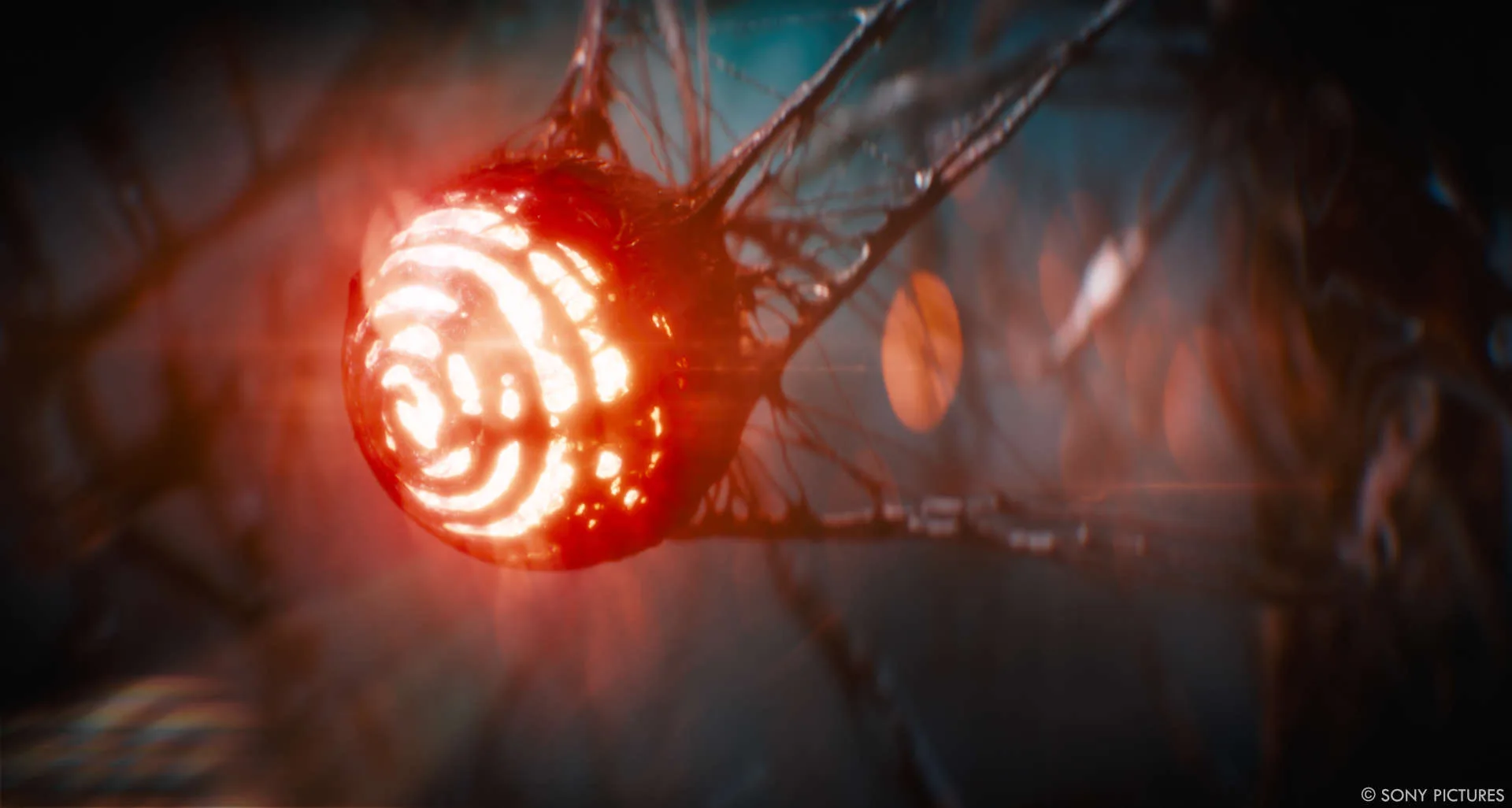
The key to overcoming these challenges was collaboration. Our animation, VFX, and compositing teams worked closely together, making sure each department’s input was considered at every stage. This constant back-and-forth allowed us to refine the shot continuously. Nuke was instrumental in the final compositing, where we could fine-tune the lighting, textures, and colors to give the sequence its surreal, otherworldly feel, enhancing the mystical and dramatic qualities of the moment.
Despite the complexity of the sequence, our ability to break it down into digestible steps and maintain a strong line of communication across teams helped us execute the shot on time without sacrificing the emotional or visual impact. It was a true team effort that pushed the boundaries of our creative and technical capabilities.
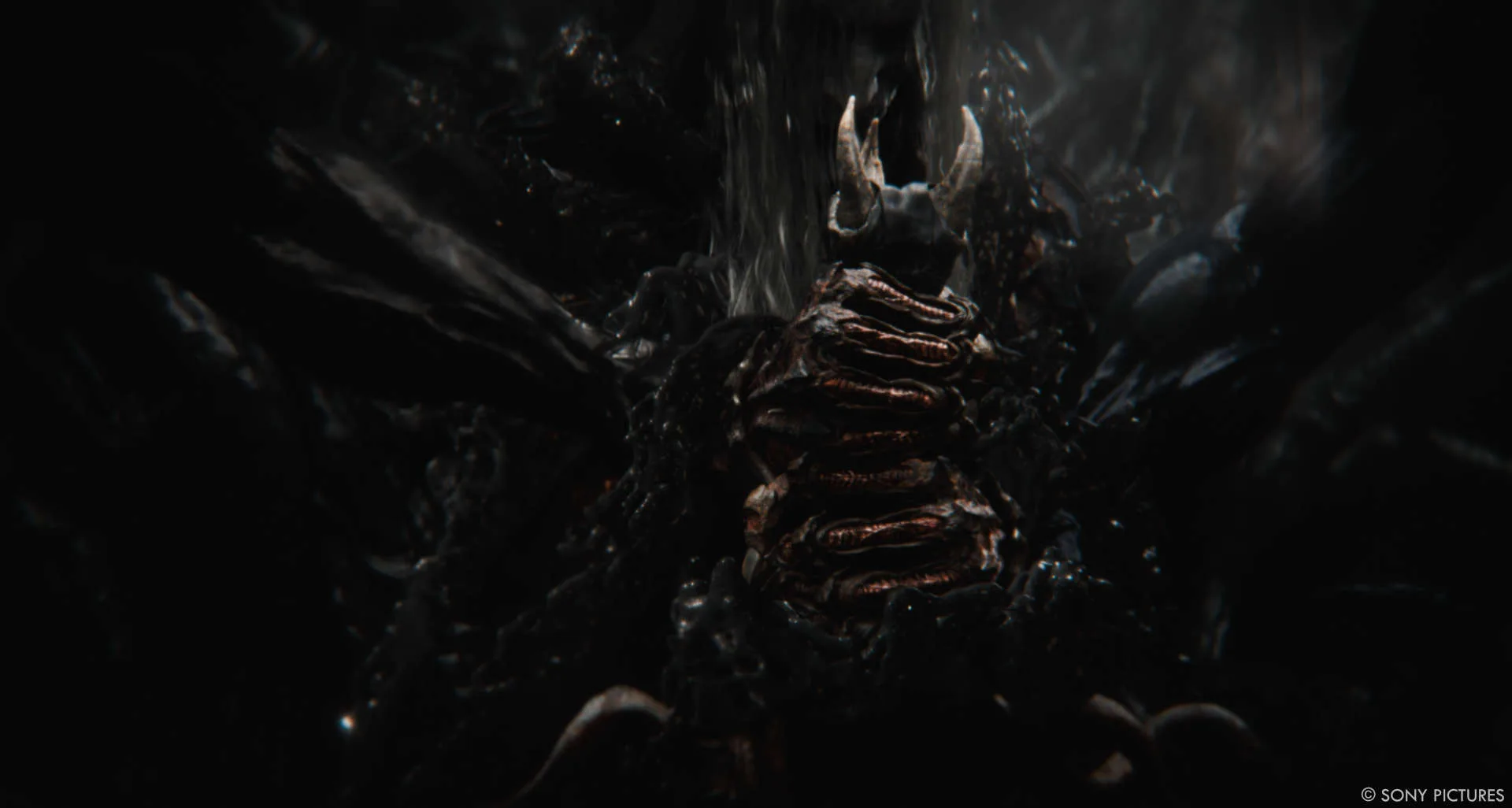
How long have you worked on this show?
SE: I was involved with the show for several months, with the bulk of the VFX work being done over a tight three-month period. The timeline was challenging, but it was during these intense months that we really focused on delivering the complex sequences, like the creation of the Codex. The pre-production phase gave us an opportunity to plan and set up the visual language, but the bulk of the execution — from simulations in Houdini to compositing in Nuke — was done in that concentrated three-month window.
Despite the pressure of the timeline, the constant collaboration with Director Kelly Marcel and VFX Supervisors John Moffatt and Aharon Bourland ensured we were always aligned creatively, which allowed us to push through and deliver high-quality work in a short amount of time. It was a fast-paced, highly collaborative effort, but ultimately incredibly rewarding to see how everything came together.
What’s the VFX shots count?
SE: Digital Domain contributed to over 75 shots with 36 making it into the final feature.
What is your next project?
SE: I’m currently the overall VFX Supervisor for New Line Cinema working with Director Michael Chaves on The Conjuring: Last Rites, which will be released this year.
A big thanks for your time.
WANT TO KNOW MORE?
Digital Domain: Dedicated page about Venom: The Last Dance on Digital Domain website.
John Moffatt and Aharon Bourland: Here’s my interview of Production VFX Supervisors John Moffatt and Aharon Bourland.
© Vincent Frei – The Art of VFX – 2025




